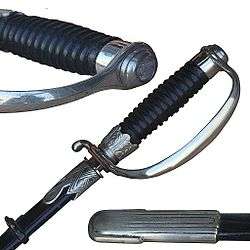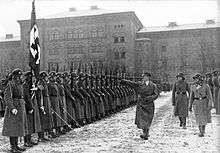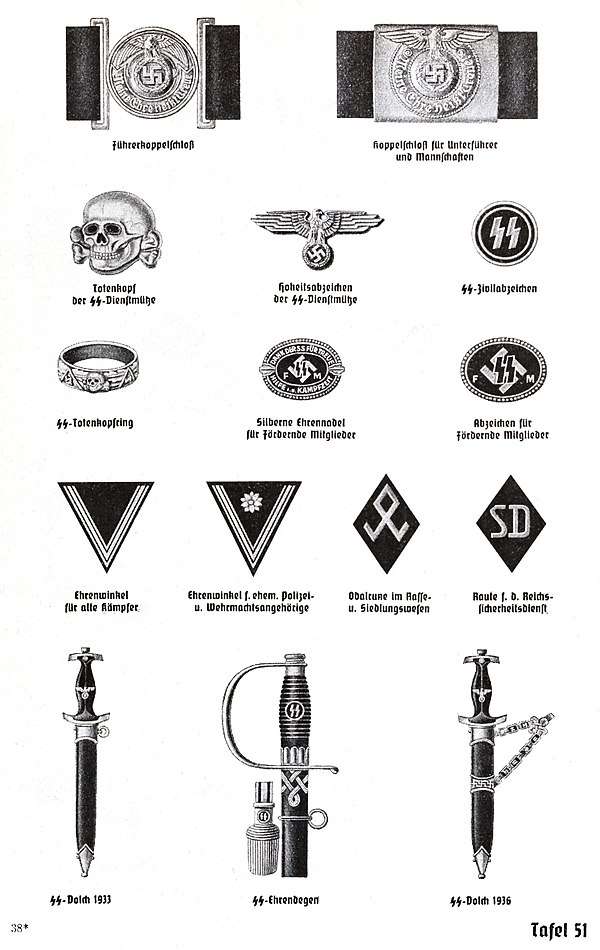Degen (SS)
The SS-Ehrendegen, also SS-Degen (officially Ehrendegen Reichsführer-SS[1]), was a straight sabre or sword, especially of the dress sword worn with a Schutzstaffel (SS) uniform from 1935-1945.
| SS-Ehrendegen | |
|---|---|
 Three views of an NCO version Degen: top, the SS sign on the pommel; middle, the oak leaves and the runic design of the handle and upper scabbard; bottom, the art deco tip of the scabbard | |
| Type | Sword |
| Place of origin | Peter Dan. Krebs firm of Solingen, Germany |
| Service history | |
| Used by | Schutzstaffel |
| Wars | World War II |
| Production history | |
| Produced | 1935–1945 |
| Specifications | |
| Blade type | Single-edged, straight bladed. |
First introduced in 1935, it was designed by Professor Karl Diebitsch, an SS-Oberführer, who was also Heinrich Himmler's personal referent on all art and design within the SS. The degen was originally manufactured by the Peter Dan. Krebs firm of Solingen, Germany.[2]
Description

It had a long thin straight blade produced at different lengths to accommodate for the height of the wearer. The degen featured a "D" shaped knuckle-bow (crossguard) as the handle which also featured a black ribbed wooden grip. The grip was bound with silver wire and featured an inset disc featuring the SS double lightning-bolt runes.[2]
The scabbard was painted in black enamel and had decorative silvered top (locket) and bottom (chape) mounts. It was worn with an aluminium braid sword knot which was embellished with the SS runes in black on the stem.[2]
Awarding
The officer Degen was officially awarded with a hand-signed certificate from Heinrich Himmler to selected officers of the SS-Verfügungstruppe and SS-Totenkopfverbände in recognition of special merit. It was also awarded to officers who graduated from the SS-Junkerschulen at Bad Tölz and Brunswick.[2]
The NCO version was similar to the officer version, but the scabbard had a plain, unadorned chape. The NCO version's handle also lacked the silver wire wrapping and the SS runes were moved from the handle to the pommel cap.[2]
See also
References
- Dienstaltersliste der Schutzstaffel der NSDAP, Berlin, 1943, p. 106
- Williamson, Gordon, Waffen SS Handbook 1933–1945.
| Wikimedia Commons has media related to SS-Ehrendegen. |
